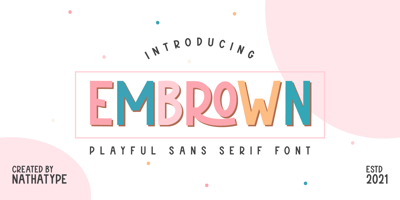What Are Variable Fonts? Why the Future Belongs to Them
What Are Variable Fonts? Why the Future Belongs to Them
Variable fonts are the next generation of web typography, and they’re rapidly becoming a game changer for designers and developers alike. They’re flexible, performance-optimized, and can scale to meet any design need — all while reducing the number of font files your website needs to load.
If you haven’t jumped on the variable font bandwagon yet, here’s everything you need to know and why they’re the future of web design.
What Are Variable Fonts?
In simple terms, a variable font is a font file that contains multiple styles (e.g., weight, width, slant) all in a single file. Rather than loading several different font files (such as regular, bold, italic, and light), you can use just one variable font file that can adjust on the fly, depending on what you need.
For example, a single variable font might include:
-
Weight (from light to bold)
-
Width (from condensed to expanded)
-
Slant (italic to upright)
Instead of loading multiple files, the browser can adjust and render the necessary styles dynamically using just one font.
Performance Advantages
1. Faster Page Load Times
One of the most significant advantages of variable fonts is performance.
-
Less HTTP Requests: Instead of making multiple requests for different font weights and styles, you only load one file. This reduces the total number of requests made to the server, speeding up page load times.
-
Smaller File Sizes: Despite offering a wide range of styles, variable fonts tend to be more file size-efficient compared to loading several individual font files. For instance, instead of downloading 5 separate files for regular, bold, italic, etc., you’re only downloading one that can scale to any needed style.
Pro Tip: By reducing the number of fonts loaded, variable fonts reduce render-blocking (the time it takes for the font to appear on the page) and improve perceived performance.
Reducing Repetitive Code & Style Consistency
Variable fonts simplify the design process.
-
One Font, Infinite Styles: You no longer need to define separate font files for each style variation. This can drastically reduce CSS complexity and make your code cleaner and easier to maintain.
-
Consistency Across Devices: Since you’re using one font file that can be adapted across multiple contexts, it ensures your design remains consistent whether it's displayed on mobile, tablet, or desktop.
Responsiveness at Its Best
Variable fonts truly shine when it comes to responsive design.
-
Fluid Typography: Variable fonts can scale seamlessly for different screen sizes, without the need to manually adjust font weights or sizes for mobile, tablets, and desktop versions. By adjusting the font’s weight or width dynamically based on screen size, you can make your typography more adaptive to the viewport.
-
Better UX Across Devices: As design systems grow, having fonts that automatically adjust their style properties based on screen size or user preferences (e.g., dark mode) creates an excellent user experience.
Example: If you're designing a landing page, you could set a variable font to become bolder as the screen size increases for better readability on large monitors, and lighter on small screens for better legibility and aesthetics.
Flexibility in Design
Variable fonts open up endless possibilities for typographic creativity.
-
Weight Control: You can smoothly transition between light and bold without needing multiple files, allowing for gradients of weight that respond to user interactions, scroll positions, or even animations.
-
Wide vs. Condensed: Adjust the width of the font dynamically to create different visual effects, like a bold statement heading that fits just right in the container, or a more condensed version for long headlines.
-
Customizable for Branding: With variable fonts, you can create custom brand typography that feels unique and adaptable, without the limits of static font styles.
Browser Support for Variable Fonts
The great news is that variable fonts are supported in all modern browsers, including:
-
Google Chrome
-
Firefox
-
Safari
-
Microsoft Edge
Although older browsers (like Internet Explorer) do not support variable fonts, they are becoming increasingly rare as web usage trends shift towards modern, responsive browsers.
Future-Proofing: As more and more websites move towards performance optimization, variable fonts are quickly becoming the default for modern web design.
How to Use Variable Fonts in CSS
Using variable fonts in CSS is pretty straightforward. Here’s how you can include a variable font:
Step 1: Add the Font to Your CSS
@font-face {
font-family: 'Roboto';
src: url('path/to/Roboto.woff2') format('woff2');
font-weight: 100 900; /* Ranges from 100 to 900 */
font-stretch: 50% 200%; /* Width from 50% to 200% */
}
Step 2: Implement in Your Styles
body {
font-family: 'Roboto', sans-serif;
font-weight: 300; /* Use the desired weight */
font-stretch: 100%; /* Adjust width */
}
With the above, you can easily control the weight and width of your font using a single CSS property.
Why Variable Fonts Are the Future
The flexibility, performance improvements, and responsive nature of variable fonts make them a game changer for web typography. They’re:
-
Lightweight: Faster load times with fewer HTTP requests.
-
Flexible: Can dynamically adapt to any screen size and design need.
-
Highly Efficient: Reduces complexity in your CSS and ensures consistency across platforms.
Variable fonts empower designers and developers to simplify typography management while offering greater creative control and performance optimization. As the web continues to evolve, these fonts will play a crucial role in making websites faster, more responsive, and adaptable to user needs.
The future of typography is flexible, efficient, and dynamic — and it’s already here.

